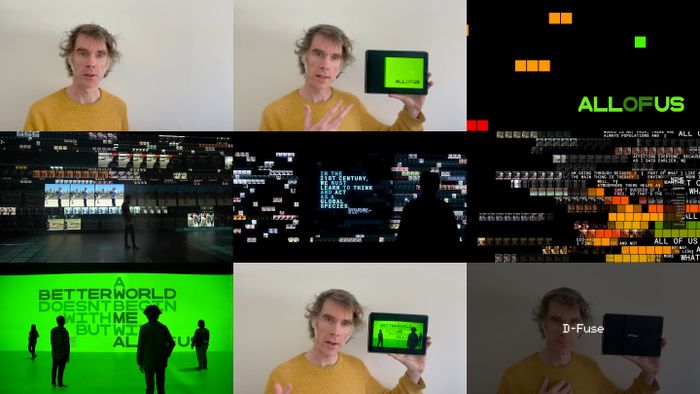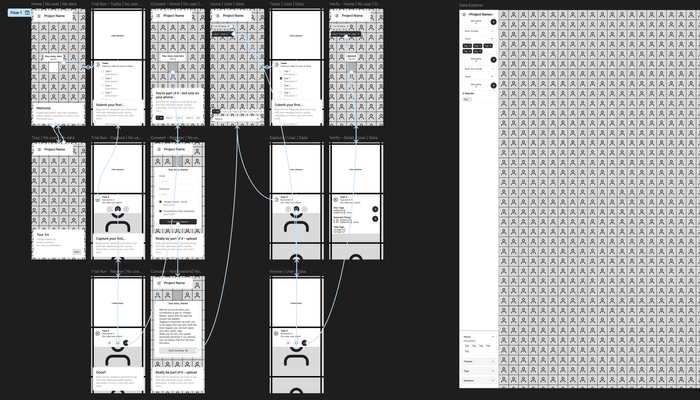I’m Toby from D-Fuse. We focus on environmental storytelling and have a strong background in filmmaking and audiovisual innovation. You can see that here. This is Nine Earths, a project that launched at the COP 26 climate change conference.
Before going into the application proper, I want to try and describe the impact of being one of these people because it gets to the heart of why we’re applying. There is something visceral in being confronted with this mosaic of people from all around the world. You start seeing patterns, it makes you think. But it rests on each of these hints and glimpses of life unpacking into real people living messy lives.
The challenge we’re addressing you can see here, it’s a data-led transition in creation and production. Previously we would fly around the world and film individual stories ourselves. We now design remote participation schemes and crowdsource that media. Before, we would then use an edit suite to arrive at a concrete form of the stories we’d gone out to film. Now the creation and production process is closer to exploring and visualising that crowdsourced data set. It’s unlocked this new way of relating you and I to the indexes and issues that matter. To those scary graphs.
The core problem is that the time burden of tagging and processing crowdsourced media is far too great for anybody but the research community – and us, but we’re foolhardy and it’s really limiting. Applying innovative new cross-cultural AI we are developing, we can automate the analysis of all this data. The benefit for the creative industries will be transformative.
This funding will enable us to create and test the software as a service prototype, de-risking the hardest capabilities required on our journey to a commercial product.
We are small and scrappy, but we’ve had big impact. I have no doubt we can deliver on this with your help.
Thank you.
‘UK registered micro or small businesses in the creative industries sector can apply for funding of up to £50,000 with a package of tailored support to grow their business.’
— Creative Catalyst, InnovateUK




